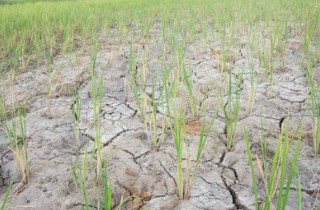
Rangelands are the largest land type on Earth, providing a source of forage for extensively grazed animals. Abiotic stresses such as drought are among the most complex environmental constraints for forage and turf plants. The high demand for drought-tolerant forages is a challenging task for breeders. Forage plants exhibit drought tolerance by developing root and stem morphological and biophysiological traits, enhancing root dynamics and plasticity, and stabilizing the recycled recoverable components of soil after rewetting to minimize evapotranspiration losses. Drought stress reduces leaf size, stem elongation, and root proliferation within the soil; it also disrupts plant water relations and reduces water use efficiency, ultimately reducing forage productivity. Therefore, drought tolerant forage breeding is a good option.
Our scientists attempt to identify components of forage grass response to drought stress at the molecular, cellular, metabolic, and physiological levels, including but not limited to:
(i) Osmoregulation.
(ii) Maintenance of positive expansion pressure.
(iii) Delayed leaf rolling.
(ⅳ) Cold tolerance.
(ⅴ) Membrane stability.
(ⅵ) Increase in metabolites (proline, betaine, abscisic acid).
(ⅶ) Dehydration osmotic stability and osmoregulation.
Following different breeding strategies and approaches, we combine conventional and molecular methods to develop drought tolerant forages. Considering parameters such as root morphology studies, proline estimation, and leaf curl, we offer selection based on integrated testing methods to breed better drought tolerant forage varieties more efficiently. Lifeasibe offers customized solutions for the molecular breeding of drought-tolerant forages, genetically modifying domesticated crops through breeding and selection to produce forage varieties with enhanced drought tolerance.
(1) Effective screening techniques for selecting and evaluating specific traits.
(2) Identification of genetic variation.
(3) Knowledge of the inheritance of tolerance traits at specific developmental stages.
(4) Knowledge of the biological mechanisms behind tolerance.
(5) Reliable direct or indirect selection criteria.
(6) Design the most appropriate breeding method/strategy to transfer the tolerance trait to an improved genetic background.
Our sequencing and bioinformatics methodologies can predict genomic selection. Our advanced genetic technologies allow targeting changes to specific loci through "gene editing" techniques. Lifeasibe enables forage grasses to grow more efficiently under drought stress than conventional varieties by breeding for drought-tolerant genotypes. Please contact us for more detailed information.
Reference